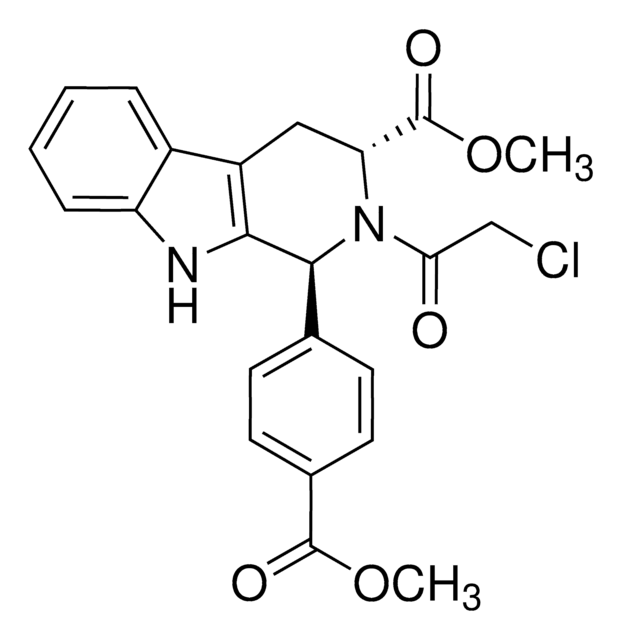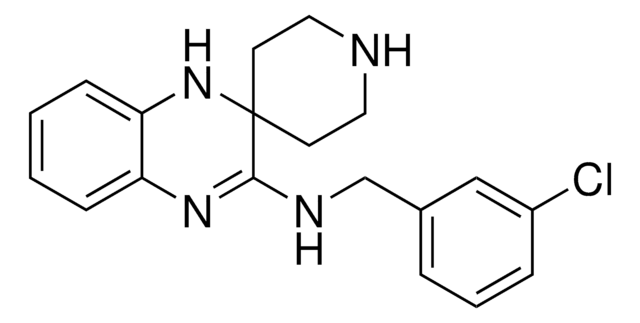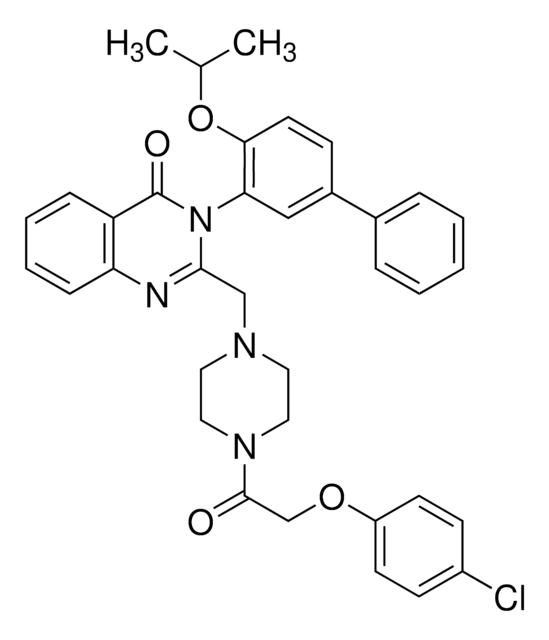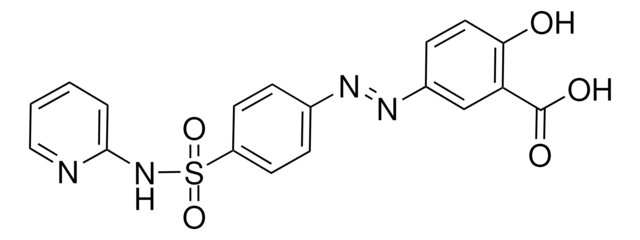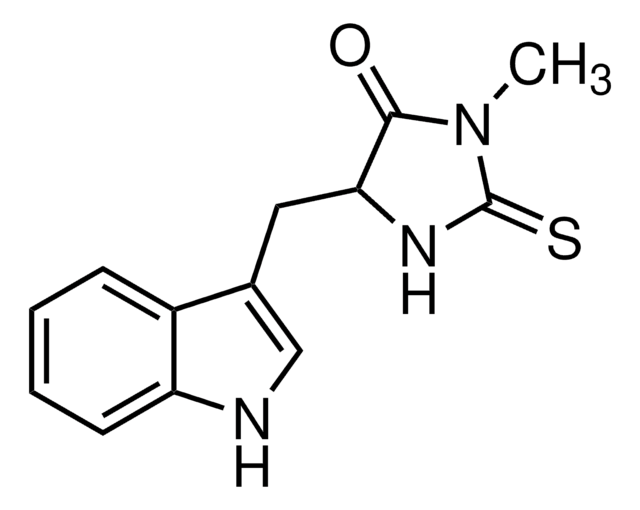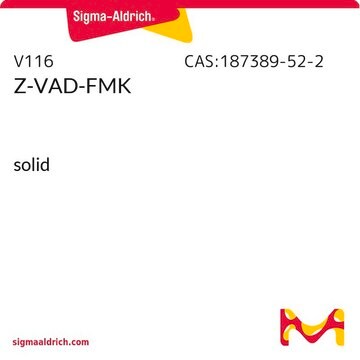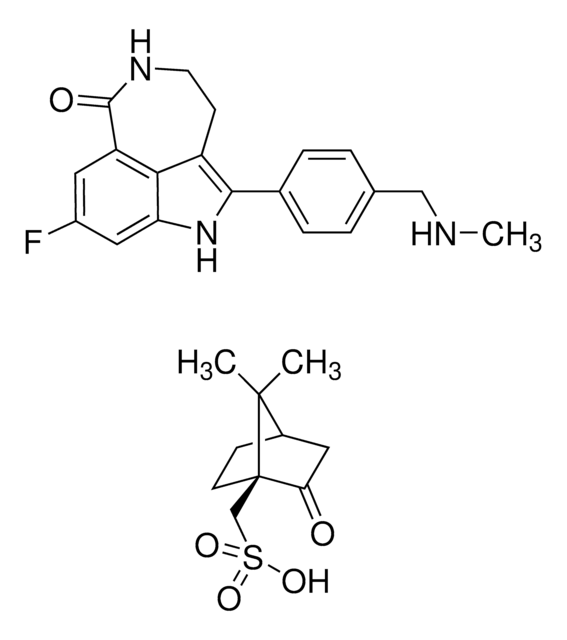E7781
Erastin
≥98% (HPLC), powder, antitumor agent
Sinônimo(s):
2-[1-[4-[2-(4-Chlorophenoxy)acetyl]-1-piperazinyl]ethyl]-3-(2-ethoxyphenyl)-4(3H)-Quinazolinone
About This Item
Produtos recomendados
Nome do produto
Erastin, ≥98% (HPLC)
Ensaio
≥98% (HPLC)
Formulário
powder
cor
white to beige
solubilidade
DMSO: 5 mg/mL, clear (warmed)
temperatura de armazenamento
−20°C
cadeia de caracteres SMILES
CCOc1ccccc1N2C(=O)c3ccccc3N=C2C(C)N4CCN(CC4)C(=O)COc5ccc(Cl)cc5
InChI
1S/C30H31ClN4O4/c1-3-38-27-11-7-6-10-26(27)35-29(32-25-9-5-4-8-24(25)30(35)37)21(2)33-16-18-34(19-17-33)28(36)20-39-23-14-12-22(31)13-15-23/h4-15,21H,3,16-20H2,1-2H3
chave InChI
BKQFRNYHFIQEKN-UHFFFAOYSA-N
Informações sobre genes
human ... hRas(3265)
mouse ... hRas(15461)
rat ... hRas(293621)
Descrição geral
Aplicação
- as a positive control for inducing ferroptosis in hepatic stellate cell (HSC)
- to induce ferroptosis and in transferrin internalization assay of human fibrosarcoma HT1080 cells
- to induce ferroptosis of muscle-derived cell lines
Ações bioquímicas/fisiológicas
Características e benefícios
Código de classe de armazenamento
11 - Combustible Solids
Classe de risco de água (WGK)
WGK 3
Ponto de fulgor (°F)
Not applicable
Ponto de fulgor (°C)
Not applicable
Equipamento de proteção individual
Eyeshields, Faceshields, Gloves, type P2 (EN 143) respirator cartridges
Escolha uma das versões mais recentes:
Já possui este produto?
Encontre a documentação dos produtos que você adquiriu recentemente na biblioteca de documentos.
Os clientes também visualizaram
Conteúdo relacionado
Apoptosis, or programmed cell death (PCD), is a selective process for the removal of unnecessary, infected or transformed cells in various biological systems. As it plays a role in the homeostasis of multicellular organisms, apoptosis is tightly regulated through two principal pathways by a number of regulatory and effector molecules.
Nossa equipe de cientistas tem experiência em todas as áreas de pesquisa, incluindo Life Sciences, ciência de materiais, síntese química, cromatografia, química analítica e muitas outras.
Entre em contato com a assistência técnica
